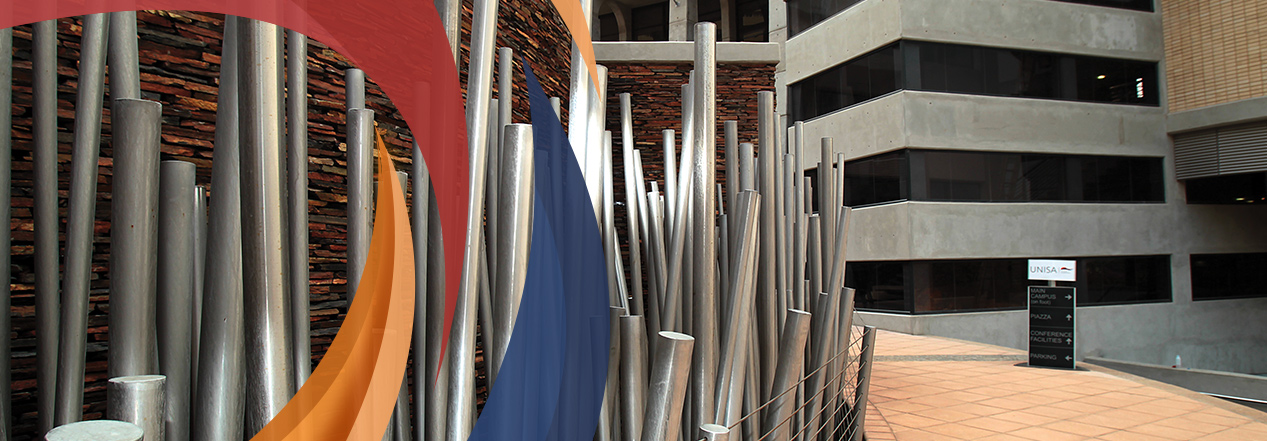

The University of South Africa (Unisa), the only higher education institution to carry the name of the country, is the people's university in every sense of the word. Throughout its history, spanning 15 decades, Unisa has responded to the developments brought about by changing times, the needs of a developing country and society at large, and an ever-evolving higher education environment. This was achieved through ongoing and dynamic transitioning. Unisa's journey has been one of continuous growth and transformation, aimed at shaping tomorrow through education.
Unisa's roots (and indeed that of higher education in South Africa) date back to 1873 when the University of the Cape of Good Hope was founded, initially functioning as an examining body for higher education.
In 1916, the university changed its name to the University of South Africa and in 1918 it relocated to Pretoria. In 1946, it became one of the first public universities in the world to teach exclusively by means of distance education. Today, Unisa is widely recognised as a leading comprehensive, open, distance and e-Learning (CODeL) university. The university has more than 370 000 students and is the largest university in South Africa and on the African continent, and one of the world's mega-universities.
With offices across South Africa and students from 109 countries, Unisa has an extensive geographical footprint and global reach.

IMfundo Ephakeme yaseNingizimu Afrika (i-Unisa), okuyisona sodwa isikhungo semfundo ephakeme esithwala igama lezwe, iyimfundo ephezulu yabantu ngawo wonke umqondo waleli gama. Kuwo wonke umlando wayo, kusukela eminyakeni engamashumi ayi-15, i-Unisa isabele entuthukweni elethwa ukushintsha kwezikhathi, izidingo zezwe elisathuthuka kanye nomphakathi wonkana, kanye nesimo semfundo ephakeme esihlala sishintsha. Lokhu kwazuzwa ngoguquko oluqhubekayo noluguquguqukayo. Uhambo lwe-Unisa lube olokukhula okuqhubekayo kanye noguquko, okuhloswe ngalo ukubumba ikusasa ngemfundo.
Izimpande ze-Unisa (futhi lezo zemfundo ephakeme eNingizimu Afrika) zisukela ngo-1873 lapho kusungulwa iMfundo Ephakeme yaseCape of Good Hope, ekuqaleni yayisebenza njengesigungu esihlola imfundo ephezulu.
Ngo-1916, imfundo ephakeme yashintsha igama layo yaba yiMfundo Ephakeme yaseNingizimu Afrika kwathi ngo-1918 yathuthela ePitoli. Ngo-1946, yaba ngenye yezimfundo eziphakeme zomphakathi zokuqala emhlabeni ukufundisa kuphela ngemfundo ekude nesikhungu. Namuhla, i-Unisa yaziwa kabanzi njengemfundo ephakeme ehamba phambili ekude nesikhungu, ewuhlobo lokufunda nokufundisa izifundo ku-inthanethi, (CODeL). Le mfundo ephakeme inabafundi abangaphezu kuka-370 000 futhi iyimfundo ephakeme enkulu kunazo zonke eNingizimu Afrika nasezwenikazi lase-Afrika, futhi imfundo ephakeme kakhulu emhlabeni.
Njengoba inamahhovisi eNingizimu Afrika yonkana nabafundi abavela emazweni ayi-109, i-Unisa inomlando obanzi wendawo kanye nokufinyelela emhlabeni jikelele.

Yunivesithi ya Afrika Borwa (Unisa), setheo se le seng sa thuto e phahameng se jarileng lebitso la naha, ke yunivesiti ya batho ka kutlwisiso ya lentswe. Ho phatlalla le nalane ya yona, e nkileng dilemo tse mashome a 15, Unisa e arabetse ntlafatsong e tliswang ke ho fetoha ha dinako, ditlhoko tsa naha e tswelang pele le setjhaba ka kakaretso, le tikoloho ya thuto e phahameng e dulang e fetoha. Sena se ile sa finyellwa ka phetoho e tswelang pele le e matla. Leeto la Unisa e bile la kgolo e tswelang pele le phetoho, e reretsweng ho bopa hosane ka thuto.
Metso ya Unisa (mme ka nnete ya thuto e phahameng Afrika Borwa) e qadile ka 1873 ha Univesiti ya Cape of Good Hope e ne e thehwa, qalong e ne e sebetsa e le sehlopha se hlahlobang thuto e phahameng.
Ka 1916, univesiti e ile ya fetola lebitso la yona ho Univesiti ya Afrika Borwa mme ka 1918 ya fallela Pretoria. Ka 1946, e ile ya eba e nngwe ya diunivesiti tsa pele tsa setjhaba lefatsheng ho ruta ka ho kgetheha ka thuto ya hole. Kajeno, Unisa e ananelwa ka bophara e le yunivesithi e itlhommeng pele ka botlalo, e bulehileng, e hole le ya ho ithuta ka elektronike (CODeL). Yunivesithi e na le baithuti ba fetang 370 000 mme ke yunivesiti e kgolo ka ho fetisisa Afrika Borwa le kontinenteng ya Afrika, hape ke e nngwe ya diyunivesiti tse kgolo ka ho fetisisa lefatsheng.
E na le diofisi ho phatlalla le Afrika Borwa le baithuti ba tswang dinaheng tse 109, Unisa e na le sebaka se pharaletseng sa dibaka le ho fihla lefatsheng ka bophara.

Die Universiteit van Suid-Afrika (Unisa), die enigste hoëronderwysinstelling wat die land se naam dra, is in alle opsigte ’n universiteit van die nasie. Unisa het sy hele geskiedenis deur, wat 15 dekades beslaan, aan die ontwikkelings wat met veranderende tye gepaardgegaan het, die behoeftes van ’n ontwikkelende land en die samelewing in die algemeen, en ’n ewig veranderende hoëronderwysomgewing gehoor gegee. Hierdie prestasie is deur middel van deurlopende en dinamiese verandering en aanpassing behaal. Unisa se reis is een van voortdurende groei en transformasie, en is daarop gemik om die toekoms deur opvoeding te vorm.
Unisa se ontstaan (trouens, die ontstaan van hoër onderwys in Suid-Afrika), dateer uit 1873 met die stigting van die Universiteit van die Kaap die Goeie Hoop, wat aanvanklik as ’n eksamineringsliggaam vir hoër onderwys gedien het.
In 1916 is die universiteit se naam na die Universiteit van Suid-Afrika verander, en in 1918 het die universiteit na Pretoria verskuif. In 1946 het dit een van die eerste openbare universiteite in die wêreld geword wat uitsluitlik afstandonderrig aangebied het. Unisa word vandag alom erken as ’n toonaangewende universiteit op die gebied van omvattende en oop e-afstandsleer. Die universiteit het tans meer as 370 000 studente. Dit is die grootste universiteit in Suid-Afrika en op die Afrika-vasteland en is een van die wêreld se mega-universiteite.
Unisa het kantore wat oor Suid-Afrika versprei is en studente in 109 lande, wat van sy uitgebreide geografiese voetspoor en wêreldwye trefwydte getuig.
Last modified: Thu Dec 11 15:36:28 SAST 2025